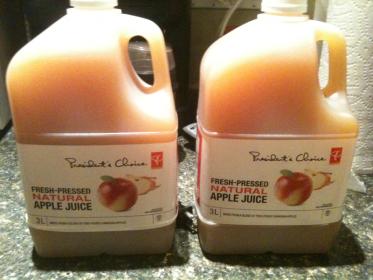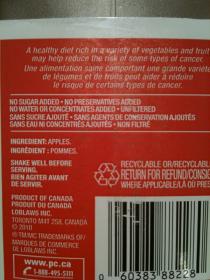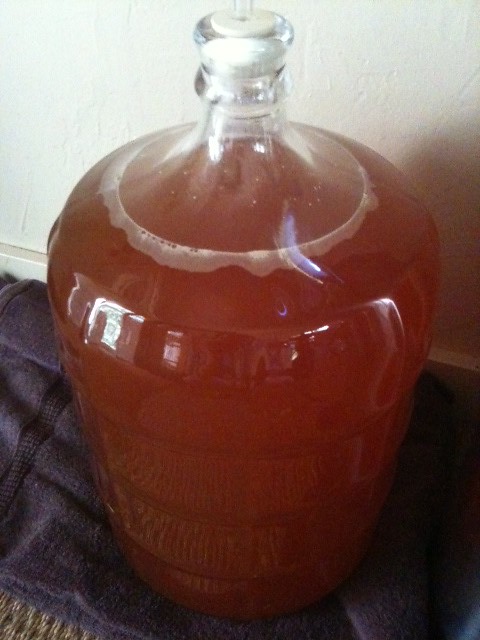* I am using EC1118 yeast. Should I pitch one full yeast packet if I am doing half the total of the OP's recipe? Will that extra yeast create any issues?
As for your original question, the full pack won't hurt anything at all.

* I am using EC1118 yeast. Should I pitch one full yeast packet if I am doing half the total of the OP's recipe? Will that extra yeast create any issues?




Moatengator said:tapped my keg of this recipe that I started 22 MAR 2011, came out very nice, think it could have stood some more time, but is good. My wife who prefers sweet cider loves its clean taste and doesn't mind the dryness.
bpm2000 said:I thought it drinkable as early as 2/3 months but it definitely could stand to wait another month and is way better at 5/6 months.
If I'm getting the cider from the mill, and not using a processed juice, does that change the need for the teabags?
Depends on the types of apples they use. If the apples have high tanning content in their skins, you can forgo the tea bags.
When you say "Yeast nutrients as needed," how do I recognize when it is needed? or how much is needed?
Generally a good idea to add it, how much depends on the batch size. You can get away without it, but the yeast may throw off some funky smells during the process (sulfur compounds and the like).
Would you think that anything else would need to change if I use the cider from the mill instead of the juice?
Again, this depends on the apples used. Traditional cider apples have a high malic acid level, which FreezeBlade substitutes the lime juice to achieve the desired tartness.
Ascorbic acid, aka Vitamin C, is often used a preservative, and at high levels can hamper yeast growth. You want to find juice without any preservatives. Limes (and all citrus) do contain ascorbic acid naturally, but the amount you're adding with the squeeze lime is negligible compared to the amount added as a preservative. The goal of adding the lime juice is to get the citric acid more so than the ascorbic. As for adding sugar, you're getting into apfelwein territory, which needs 6 months to a year to mature and be ready for drinking. The best target starting gravity of a cider is whatever the apple juice you bought it (around the mid-1.04 range).I just started messing around with small batches of cider. Hopefully I can make something good by the holidays. I was worried that the only juice I could get had ascorbic acid, but after reading the threads, some acid seems like a good thing - yes?. I made one gal batch with an extra lb of corn sugar, SG 1.010, and used a champange yeast. From what I've read now I think that gal may be distilling grade. What is a target SG for a decent cider? And what kind of spice can I be considering?
SteveHoward said:Thanks Harkin. That's the kind of input I need.
Do you have one you like with the fresh pressed cider?
I'm curious if someone can compare and contrast the taste of this with Edwort's Apfelwein: https://www.homebrewtalk.com/f25/man-i-love-apfelwein-14860/ I'm sure someone has made both and can tell how they compare.
Pitched last night with juice from two small lemons, as well as 4 bags of orange / black pekoe tea and 5 tsps of yeast nutrient. S-04 yeast. Starting to bubble this morning, less than 12 hours later.

Can I leave the cider on the fruit until I'm ready to bottle? Or should I rack to another carboy to clear and age?
Question from a real noob with big artistic aspirations ... I'm looking to make the best stuff I can, and learn it well - not just make something to give me a cheap drunk. This recipe is the most interesting of the cider recipes I've seen thus far, and the discussion gives me some insight, but ...
I've spoken with the cider mill near where I live, and found that I can get fresh, unpasteurized cider from them if I will sign a waiver and promise to not drink it without making hard cider. With that in mind, some of the total noob questions I have are:
If I'm getting the cider from the mill, and not using a processed juice, does that change the need for the teabags?
When you say "Yeast nutrients as needed," how do I recognize when it is needed? or how much is needed?
Would you think that anything else would need to change if I use the cider from the mill instead of the juice?
This year is the first year I have brewed anything of my own, and I don't even know anyone else personally who can answer questions I have. I've just moved to Washington this year just in time to catch the ripening blackberries.My eye is on next catching that fantastic apple harvest up here. I want to get it right, and get it on time. I don't mind experimenting, I just want to know enough to know how to experiment.
Enter your email address to join: